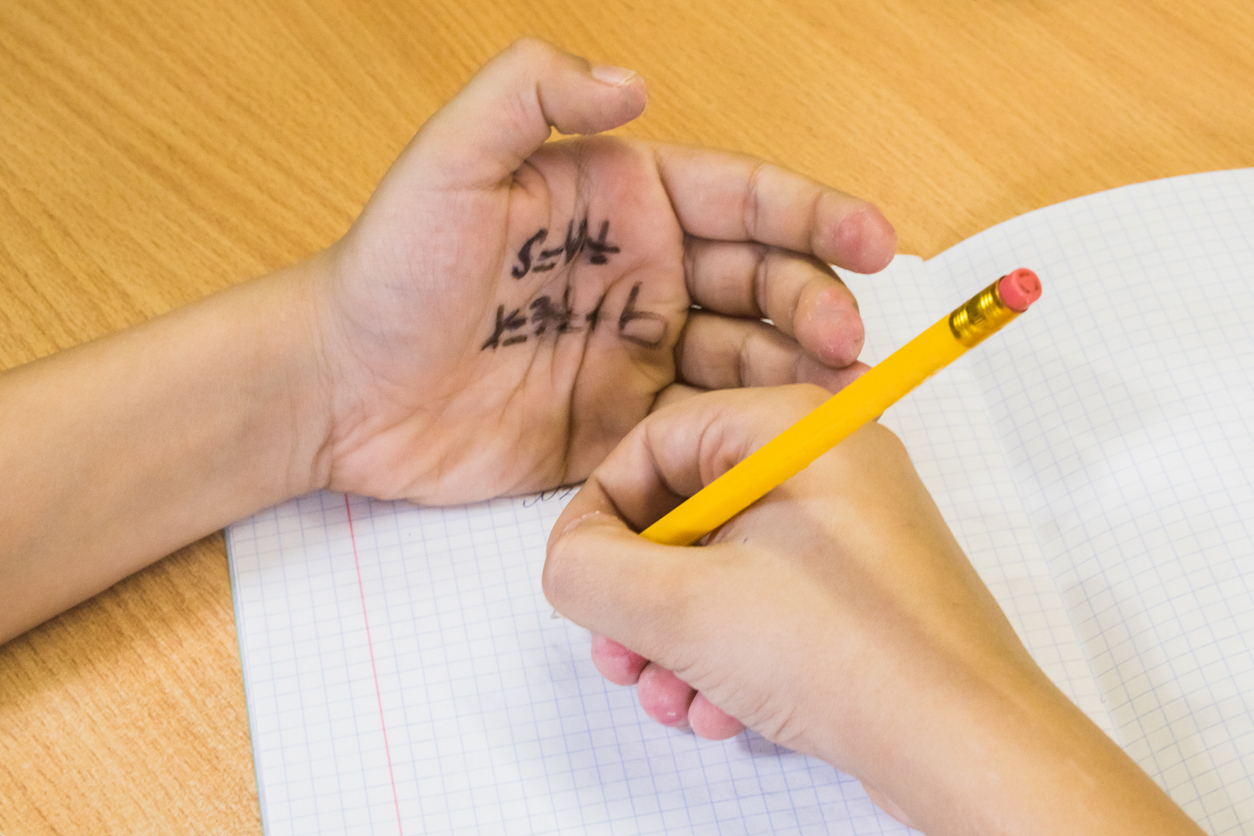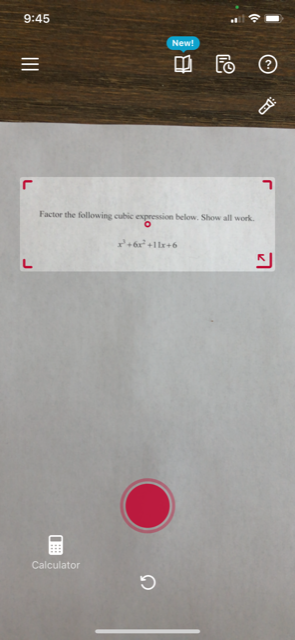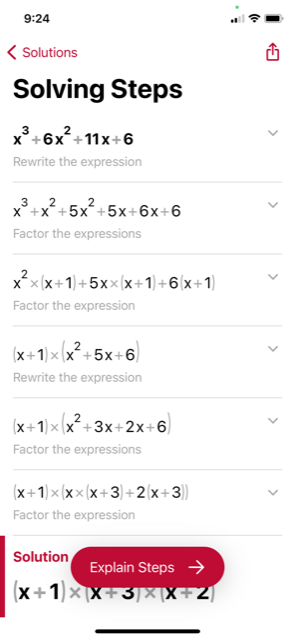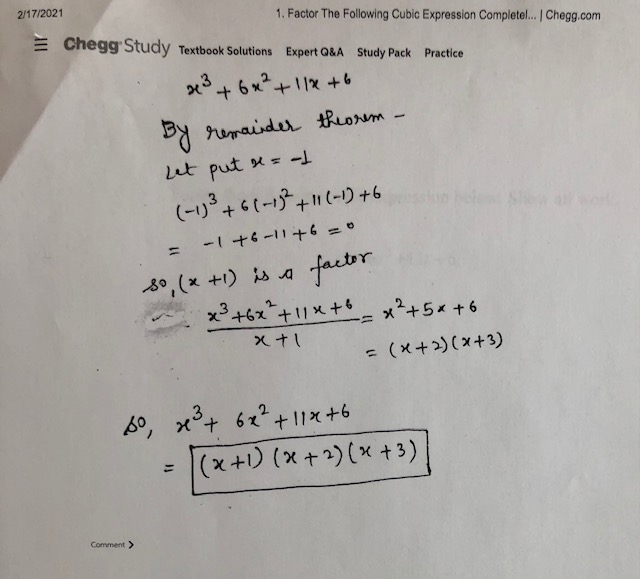
Tools for High School Teachers: April’s Egg-cellent Add-ons!
April is here, bringing fresh spring energy and the fun of Easter! We’ve got some exciting tools to help make

The debate about the role of homework in math education has been around for quite a long time. How much homework should be assigned? Should homework be collected and graded for accuracy or should it only receive a completion grade. What portion of a student’s grade should depend on homework rather than assessments and projects? There are many in the world of math education who believe that homework should either be deemphasized, not used for grading purposes, or eliminated entirely. Regardless of where you fall on this issue, as educators, we now face the rise of technology that makes it exceptionally easy for students to copy homework solutions without doing the important thinking required to solve them.
I founded eMATHinstruction in 2008. Over the years we have seen varying degrees of students’ attempts at cheating. The most blatant cheating by students comes in the form of kids stealing their parent’s credit card to purchase answer key membership on our website. One of the limitations of us making our keys available to teachers who purchase memberships for themselves is that they are available to anyone with a credit card. We have learned along the way and have put measures in place to limit access to certain resources to verified teachers. When one makes a purchase on our website we state clearly that we take academic integrity seriously and will work with school districts who suspect a student of cheating. This comes up as soon as you add a Teacher Plus membership to your cart.

As with any digital resource it’s sometimes difficult to keep the genie in the bottle. Just ask any musician who battled Napster. For print resources one only needs a camera or digital file and the ability to upload (sound like most of America?) for resources to get out there. Obviously, students have always had the ability to cheat by copying a classmate’s solutions, but when they have the ability to use a search engine to find the answers, it becomes a much larger issue, especially when homework is an integral part of their grade. This is a new reality for schools and teachers to come to terms with.
From a publisher’s perspective it is frustrating that resources pop up in places without permission. We try to make it clear that posting of resources is not permissible. For those of you who use our resources on a regular basis this is a familiar box you see and must accept with every download.

We do what we can on the front end to discourage file uploads but since the beginning of time some people will feel pressured to cheat because they struggle or because it’s the path of least resistance. Today’s technology makes cheating that much easier, and the pandemic has poured fuel on that fire.
Entire website services have emerged for students to get “help with homework”. Quotes there were intentional. Each one of these sites has an academic integrity policy that states their service is not to be used for cheating. You would be hiding under a rock if you did not think the primary use of these sites was cheating. They encourage students to upload the contents of their backpack to get “help”. That help then remains up for all to see. One would think this is copyright infringement, and it is, but sites like these hide behind the DMCA.
The Digital Millennium Copyright Act (or the DMCA for short), signed into law in the late 1990’s by Bill Clinton, did two things: (1) it increased penalties for copyright violations on the internet and (2) it limited the liability of online service providers if their users violated copyright laws. When requested by the copyright holder that material be taken down, the hosting site must comply. We have become quite familiar with submitting DMCA takedown notices, but it is a game of Whack-a-Mole.
Obviously, the ability for a student to be able to find solutions to assignments is problematic when it comes to homework. At least this forced students to do a search online. Technology is moving so fast that search engines to find uploads may soon be a thing of the past. The new king is instant answers from apps such as Photomath and websites like Chegg. These tools make it even easier for students to cheat on homework and possibly even assessments (quizzes and tests).
If you hadn’t heard of Photomath yet, you need to quickly learn about it, especially if you put a great value on homework in your grading system. Photomath is a free app (with in app purchases) that will solve many math problems, giving step by step solutions to the problem. Photomath markets itself as an app that encourages learning, and in a perfect world, that might be the case. The mere fact that it is able to instantaneously solve a math problem immediately lends itself to cheating. I wanted to see how powerful Photomath was so I created a problem that I thought would be challenging:


Anyone who has taken Algebra can factor a quadratic, especially with a leading coefficient of one. But many students, even those who may have taken precalculus, will not be able to factor a random cubic polynomial. To solve this using Photomath I literally opened the app, framed the problem in the viewing window:

Within the time of a heartbeat, the app produced an answer with a step by step solution:
This isn’t the method I would have thought to use (although I’m fascinated to know if any factorable cubic could be done this way). Still, regardless of how I would have done it, it certainly is an acceptable solution, if perhaps a non-routine one.

In case you’re wondering, the app itself is free and to find the solution to my example problem I did not have to pay anything or sign up for any account. Think about how easy it would be for a student to use this app to do an assignment that is primarily rote fluency problems. I did, however, find that Photomath had a hard time with many of the problems in our Common Core Algebra I book. Any type of problem that had any significant text in it was an issue and multiple-choice problems also seemed to throw the app for a loop. I was surprised by how many times I saw this pop up on the app:

And geometry proofs? Forget about it! Though they do seem rather convinced they will be able to handle them eventually:

This app can definitely crunch through a lot of drill problems. Give your students a 50 problem factoring worksheet for homework and I guarantee it can be done in five minutes by this app. But, what’s a kid to do if this app can’t handle a multiple choice problem as easy as this?
That’s where Chegg comes in. See, the problem with Photomath is that it relies on pretty impressive, yet limited, artificial intelligence to solve the problems. Chegg, on the other hand, employs an army of real people who just wait to solve whatever problem you throw their way. Because Chegg can handle a far greater sophistication of problems, it is the choice of college students. The web service is so popular amongst college students that it has become a verb. Students will “chegg” an assignment if they don’t have the time or ability to do it otherwise.
So, what do you get for your $14.95 per month on Chegg?

Well, if you supply them with a math question you first are given a selection of similar ones that they’ve already worked out solutions for. If you can’t find yours in that selection you can opt to get a handwritten response back. Remember our original problem we gave to Photomath?


The solution Chegg sent me back was this:
This is actually the way I would expect a student of mine in precalculus to factor this cubic polynomial. So, if I saw this solution come back, I would likely give the student full credit (although I do believe when the solver divides the cubic by the linear binomial there should be more work shown to produce the quadratic expression). At this low, low, low monthly price, a student could spend $150 for a 10 month school year and be supplied with the answer to any math problem they want, including those at the college level.
This trend is troubling enough that teachers are certainly taking notice at both the K-12 level and the collegiate level. It was exacerbated this year by remote and hybrid instruction forced by the pandemic. I know many teachers have had no choice but to give assessments to students, even online when they are at home. Perhaps there are ways for the teacher to monitor the use of these types of apps while the student is taking their test, but it isn’t very realistic if they are taking the test at home.
At some point, though, we will return to in school learning everywhere. In the case of tests, then, students will typically not be able to use Photomath or Chegg to help them (unless their teacher is at an almost Hollywood level of cluelessness in the classroom). But, students will certainly be able to continue to use these types of apps at home in order to do their homework. As much as we might wish it, these apps are certainly not going to go away. In fact, now that companies know that they can make a profit from helping students cheat, they are starting to proliferate. Watch for these exciting apps to be showing up on your students’ phones: Slader, Mathway, and Mathpresso. The presence of these types of services must make us ask very fundamental questions about the role of homework, especially in terms of assigning grades to students.
In my own classes, which ranged from Algebra 1 through AP Calculus, I always assigned homework and I always looked it over briefly at the beginning of each class. I hardly ever collected it and it comprised approximately 10 to 15% of the overall grade for any given marking period. When I checked student homework it was mainly for completion and effort. Kids who both completed and made good effort got a 2/2, those who maybe didn’t do all of it or made less effort received a 1/2, and those who didn’t do it received a 0/2. Homework wouldn’t typically make or break a kid, but getting a perfect homework grade would typically raise a student’s grade around 6 to 10%.
We really must ask ourselves what the role of homework should be moving forward and what it should look like given a student’s ability to have much of it done for them (even if it is at a cost). I am not an advocate of no homework at all. That would be as silly as expecting students to learn music by only attending the lesson and never practicing at home. I am an advocate of two things: (1) high quality homework that includes not only fluency problems but application and reasoning tasks and (2) optimizing the weight of the homework grade relative to the student’s marking period grade.
I also want to throw one more idea about homework out there to think about. I taught at the high school level for almost two decades. In my time I saw thousands upon thousands of sets of homework solutions. I would say that a good percentage of the time my two biggest issues with students doing homework were: (1) their lack of doing it at all and (2) the exceptionally poor quality of work when it was done. In both cases, these students would often go on to do poorly on assessments as well (shocker!). I wonder if these students would have actually gained more from copying down perfect solutions that were produced by an app. Does the transfer of a solution from a screen to a piece of paper also transfer some educational knowledge? Do the apps step by step directions actually help students who faithfully copy the solutions? We all cringe at the thought of students doing this and claiming the solutions they copy down as their own. I think we also all understand that the student who wants to learn and who has the fortunate circumstances to learn gets far more from struggling on the homework and producing their own solutions. But, maybe, just maybe, for the students who would otherwise not do any homework or the student who would do the homework, but poorly, these apps might even help.
As always, we would love to have input on how teachers see the role of homework in light of apps like Photomath and services like Chegg.

April is here, bringing fresh spring energy and the fun of Easter! We’ve got some exciting tools to help make

April brings much-needed spring energy to the classroom amidst the hustle and bustle of preparing for the end of the
eMATHinstruction was developed by a National Board Certified Teacher in 7-12 Mathematics. With a teaching style that combines Socratic questioning and direct instruction, the goal is to help students uncover math concepts through active learning while providing clear, supportive explanations to ensure every student feels confident and capable.
Yes, eMATHinstruction’s curriculum is evaluated annually using EdGate’s standards alignment services. We strive to provide educators with a clear view of how our content aligns with specific educational requirements.
eMATHinstruction’s courses are designed with a focus on deep understanding of mathematical concepts. Our Common Core series aligns with the Common Core State Standards (CCSS) as defined by the PARCC Consortium, while our N-Gen Math series is aligned with New York’s Next Generation Math Learning Standards (NGMLS). To learn more about how the curriculum aligns with your state please reach out to our school support team at [email protected].
To receive a quote please contact us at [email protected] or fill out our online quote inquiry form.
© eMATHinstruction 2025. All rights reserved
Thank you for using eMATHinstruction materials. In order to continue to provide high quality mathematics resources to you and your students we respectfully request that you do not post this or any of our files on any website. Doing so is a violation of copyright. Using these materials implies you agree to our terms and conditions and single user license agreement.
Thank you for using eMATHinstruction materials. In order to continue to provide high quality mathematics resources to you and your students we respectfully request that you do not post this or any of our files on any website. Doing so is a violation of copyright. Using these materials implies you agree to our terms and conditions and single user license agreement.
The content you are trying to access requires a membership. If you already have a plan, please login. If you need to purchase a membership we offer yearly memberships for tutors and teachers and special bulk discounts for schools.
Sorry, the content you are trying to access requires verification that you are a mathematics teacher. Please click the link below to submit your verification request.